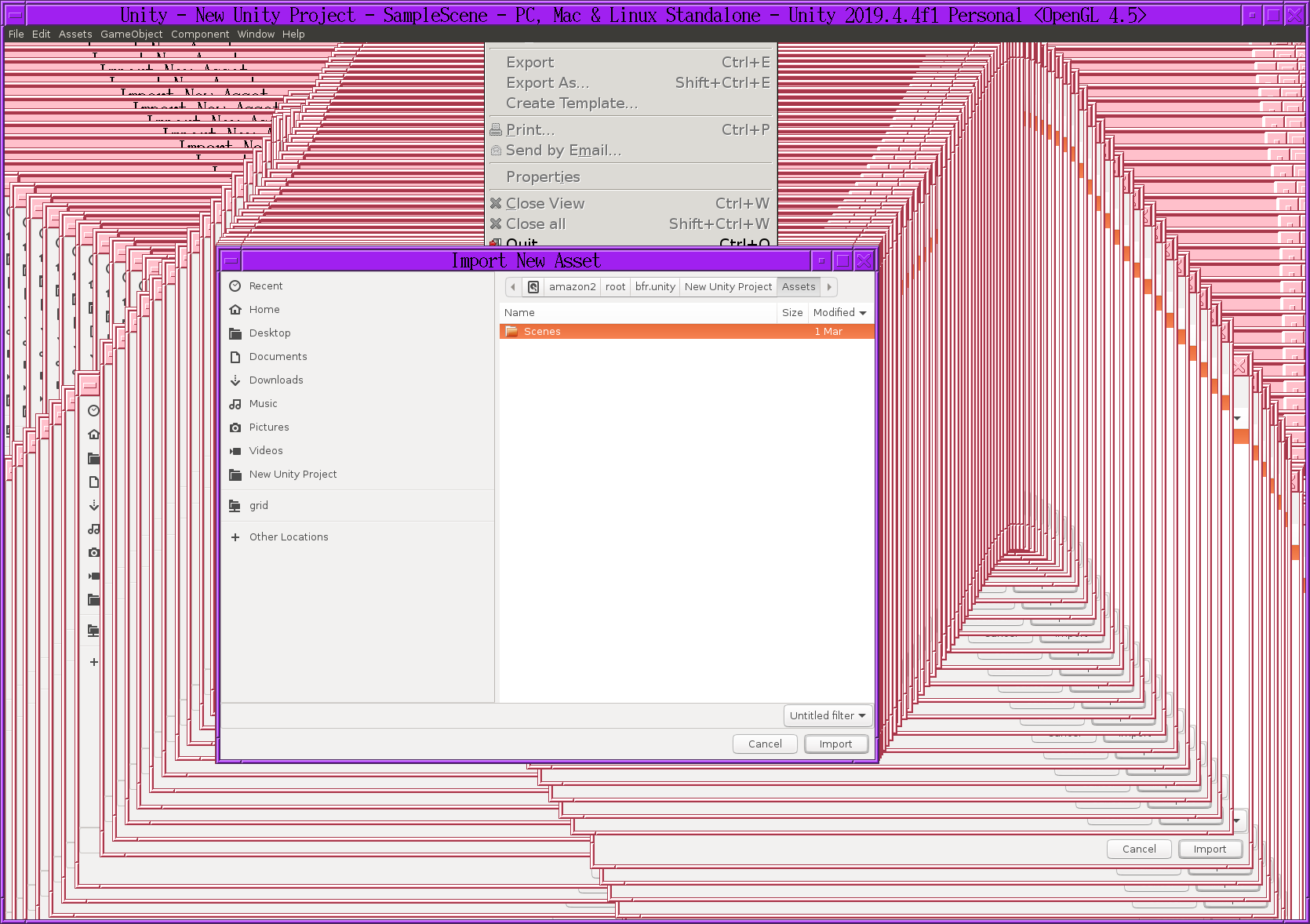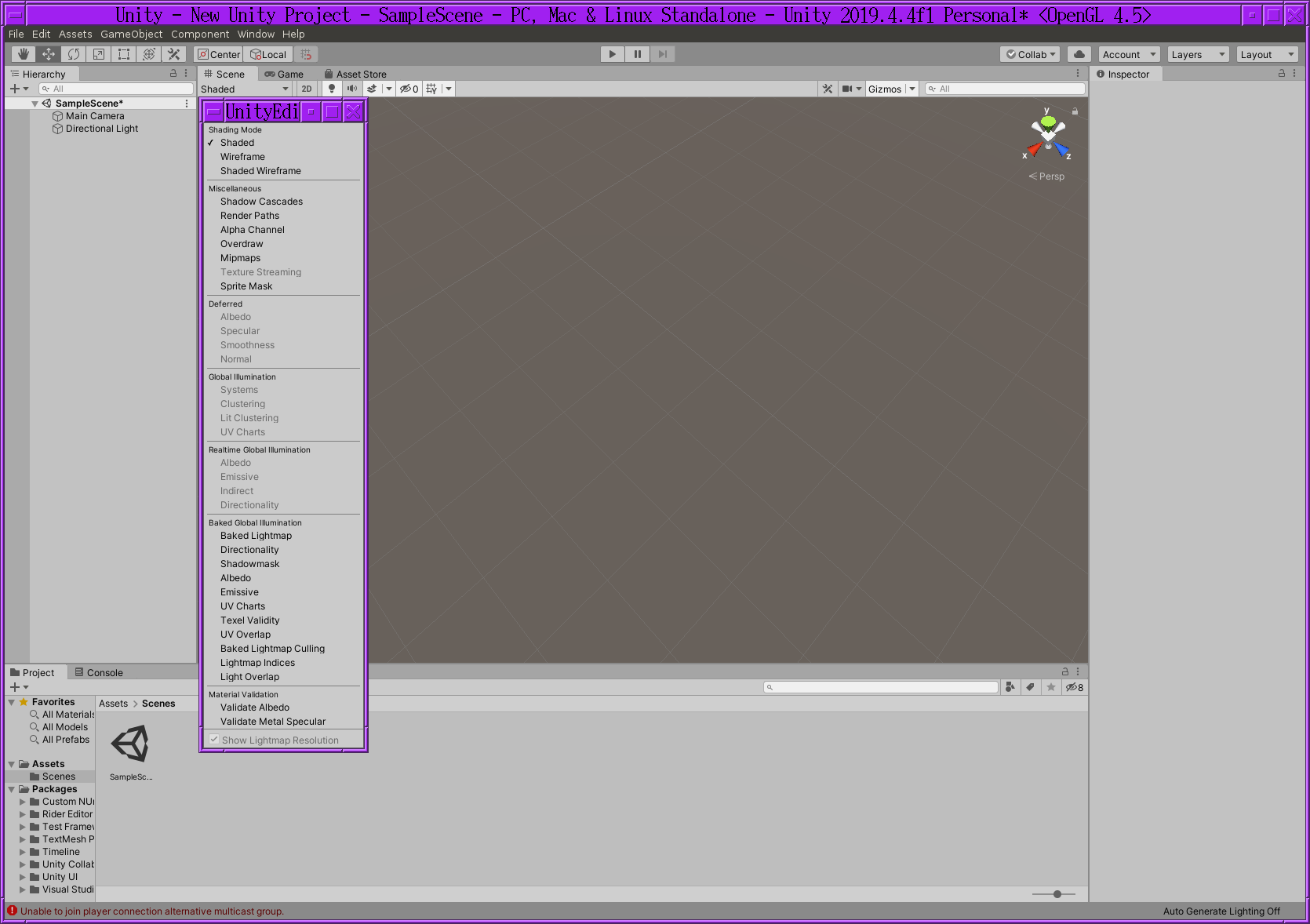Revisiting it, they haven't changed plans, though the industry trend is starting to require projects to be stored on company servers instead of git. There seems to be an industry backlash against github, as the repositories are boosting github's valuation instead of individual startups.

The verdict was something is better than nothing & enough time went by without any progress to move away from godot. The lion kingdom would choose any game engine which just had a built in car racing system, so it might entail trying every game engine. Unity was 1st because all the other BART riders worked there. It's a big deal for lions to base their productivity on the whims of corporate profits. It was a big deal to move PIC development to MPlab after hanging on to assembly language longer than anyone else.

The user interface was a kludge.

The X11 port was low effort. The mane problems were the expose events not being handled, zoom functionality not working, package manger not working. In the package manager were supposedly off the shelf spaceship & car assets with the physics fully implemented while godot only had a single partially implemented vehiclebody. Unfortunately, debugging the package manager would be quite difficult & besides the few free assets, most of them were expensive. Watching through a tutorial
the mane benefits from unity were in modeling the map & visuals. The vehicle body was more complete than godot, supporting jumps, but still nowhere close to asphalt 9. Gameplay continued to rely on programming the very same transforms as godot, rather than installing an instant game. It uses very microsoft centric C# & visual studio. Supposedly visual studio has replaced netbeans, which previously replaced eclipse as the gold standard. Even though godot's IDE is a turd, lions always used nedit. Since no-one instantly popped out a space racer in unity, the idea was put on hold.
To reduce the brain power, it could be a transparent race track with environment map angled in such a way that the track appeared to take off vertically when it really was horizontal. That eliminates the virtual gravity problem. When the track appeared to reach Mars & the ships reversed direction to slow down, it really was another horizontal position & the ships were slowing down horizontally.
Tux racer was a beloved game of lions. The ability of its physics system to slide along, jump, & convey the sensation of speed greatly resembled what lions wanted in a space racer. It also had surreal looking visuals when racing at night, an open world which only slowed down when off track, non deterministic flat spins. It's missing manely barrel rolls, knockdowns, opponents, drifting, modern graphics, but the basic gameplay is there.
It was all written in paw coded C in a single semester. The author became a highly successful indie game developer, still doing exactly the same thing today he did 22 years ago. The lion kingdom never learned the amount of game engine theory that guy learned in school. Being written in C allowed a lot of tricks not possible in a modern python game engine.
There's always telling the player to suck it & pilot in 3 dimensions instead of riding the wall & following gravity.
 lion mclionhead
lion mclionhead
Discussions
Become a Hackaday.io Member
Create an account to leave a comment. Already have an account? Log In.